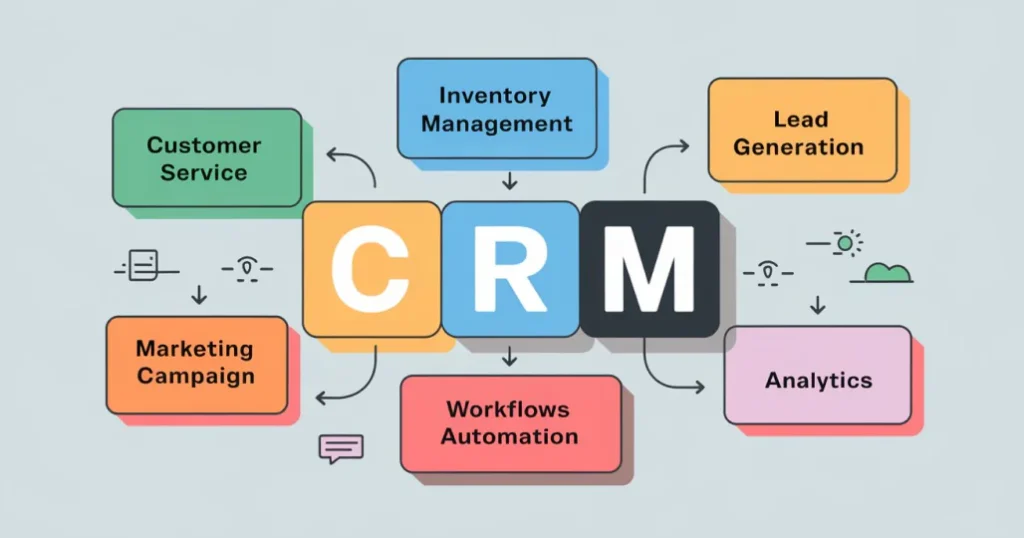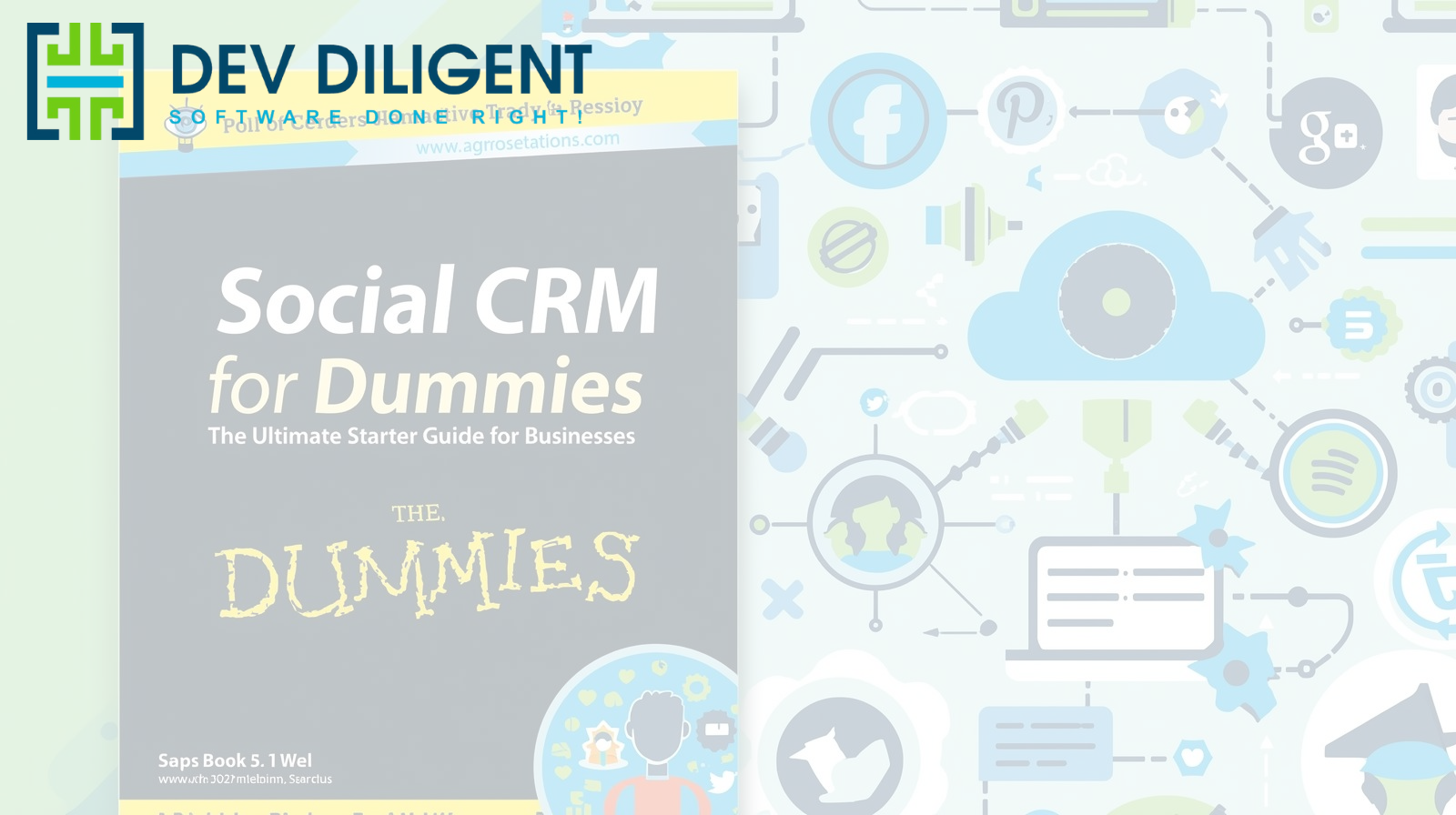In today’s competitive business landscape, a Customer Relationship Management (CRM) system is no longer optional — it’s essential for growth, productivity, and customer satisfaction. However, many businesses underestimate the complexity of CRM implementation. A successful deployment requires a clear strategy, professional guidance, and consistent optimization.
In this guide from DevDiligent, we’ll explore proven CRM implementation best practices, essential steps, common challenges, and expert insights to help you achieve a smooth and effective CRM rollout.
CRM Implementation Best Practices
Quick Table for CRM Implementation Best Practices:
| CRM Implementation Step | Key Best Practice | CRM Implementation Strategic Action | Benefit / Success Metric |
| I. Planning & Strategy | The Buy-In Mandate | Clarify the specific business goals (e.g., lead conversion rate, churn reduction) and secure support from all departments (sales, marketing, IT). | Prevents project failure (15-69% failure rate); Ensures goals align with the selected CRM’s capabilities. |
| II. Customization & Integration | Fit the CRM to the Business | Customize fields, page layouts, and workflows to match your unique business model, rather than forcing the business to conform to the software. | Achieves a single source of truth for customer data; Enables custom workflows that shorten the sales cycle. |
| III. Data Management | Clean Data First | Cleanse and standardize all historical data (remove duplicates, correct errors) before migration. Implement data validation rules for all critical fields. | Maintains Data Integrity after go-live; Data quality is the foundation of effective CRM analytics. |
| IV. Partnering & Expertise | Utilize Expert Resources | Allocate sufficient time and budget (modern CRM implementation takes 4-8 weeks). Engage a suitecrm development company or dedicated implementation partner. | As a result, mitigating the risk of poor CRM implementation (the most common cause of failure) leads to a 65% increase in sales and a 50% increase in productivity. |
| V. User Adoption & Training | Just-in-Time Training | Train staff immediately before the official launch. Provide continuous, hands-on support and accessible documentation. | Drives high user confidence in the system; Improves user adoption rates and maximizes ROI. |
| VI. Auditing & Optimization | Continuous Iteration | Establish a process for regular CRM audits to check system integrity, monitor workflow bottlenecks, and measure user utilization rates. | Ensures the system adapts to evolving business needs; Continually fine-tunes processes for greater business efficiency. |
| VII. Analytics & Insight | Leverage Data-Driven Decisions | Furthermore, utilize CRM analytics to identify sales opportunities and track performance. Integrate advanced tools to leverage predictive analytics for forecasting. | Maximizes the $8.71 ROI for every dollar spent; Transforms historical data into strategic future insights. |
What Is CRM Implementation?
CRM implementation is the process of setting up, configuring, and integrating a CRM system into your business operations. It includes multiple stages such as requirement analysis, software selection, customization, data migration, team training, and continuous optimization.
A well-executed CRM implementation ensures that your organization can effectively manage leads, track customer interactions, and automate workflows — ultimately improving customer relationships and business performance.

Why CRM Implementation Best Practices Matter
Following best practices helps avoid common pitfalls like poor user adoption, data duplication, and budget overruns. Research shows that companies investing in structured CRM implementation strategies experience up to a 65% increase in sales and a 50% boost in productivity.
The difference lies in having a well-planned process — and working with an experienced CRM implementation consultant who understands both your business needs and the technology.
Key CRM Implementation Steps
Every successful CRM implementation process follows a structured path. Here are the essential steps to get it right:
1. Conduct a Needs Assessment
Start by identifying your goals and expectations from a CRM system. Collaborate with sales, marketing, and customer service teams to define your business objectives — such as improving lead conversion, customer engagement, or data management.
2. Choose the Right CRM Platform
Select a CRM that fits your needs and scalability. Compare cloud-based options like SuiteCRM, Salesforce, or Dynamics 365 based on ease of use, integration capabilities, and affordability.
3. Develop a Clear CRM Implementation Strategy
A clear strategy aligns your business and IT teams. First, define the project scope, assign roles, set measurable KPIs, and establish timelines. Ultimately, this roadmap will guide your CRM implementation process effectively.
4. Customize and Integrate
Tailor the CRM to your unique workflows. Create custom fields, automate repetitive tasks, and integrate the CRM with your existing tools such as email, ERP, or marketing automation systems.
5. Migrate and Clean Data
Clean, accurate data is the foundation of any CRM system. Before migrating, validate and standardize all customer records to prevent duplication or data corruption.
6. Test Thoroughly
Test all workflows, permissions, and reports to ensure everything functions smoothly before going live. Early testing helps identify issues that could disrupt performance.
7. Train and Support Your Team
Train all users based on their roles. Offer practical, hands-on sessions close to the go-live date to ensure confidence and retention. Provide ongoing support materials and access to a CRM implementation consultant if needed.
8. Go Live
Once testing and training are complete, launch your CRM system. Keep your consultant or technical support available to help your team during the transition phase.
9. Evaluate and Optimize
After deployment, continuously monitor performance and gather user feedback. In addition, regular audits, updates, and training will help you maintain system efficiency and ROI.

Common CRM Implementation Challenges
Even with planning, some businesses face difficulties during CRM setup. The most common CRM implementation challenges include:
-
- Resistance to change: Employees may be hesitant to use new tools.
-
- Poor data quality: Duplicate or outdated information can impact results.
-
- Unclear objectives: Without defined goals, adoption rates drop.
-
- Budget overruns: Unexpected costs during customization or integration.
-
- Integration issues: Difficulty syncing with legacy systems or external apps.
Partnering with a professional CRM implementation consultant helps address these issues proactively and ensures a seamless process.
Expert Tips to Overcome CRM Implementation Challenges
Here are some expert tips to overcome CRM Implementation challenges which are given below:
-
- Start small with a pilot project before scaling.
-
- Involve end-users early for feedback and buy-in.
-
- Automate routine tasks to increase accuracy and save time.
-
- Use analytics to monitor CRM adoption and performance.
-
- Maintain open communication between departments to align goals.
Understanding CRM Implementation Cost
The CRM implementation cost depends on factors such as the number of users, level of customization, integrations, and ongoing support.
Small to mid-sized businesses typically spend between $5,000 to $20,000, while large enterprises may invest significantly more. However, the long-term return on investment often outweighs the initial expense, as CRM systems help increase efficiency, revenue, and customer satisfaction.
Why Work with a CRM Implementation Consultant
A professional CRM implementation consultant provides end-to-end guidance like from selecting the right platform to customizing workflows, training users, and offering post-launch support.
At DevDiligent, our experts specialize in delivering CRM solutions that align with your business objectives and ensure smooth, cost-effective deployment. Additionally, we help you minimize risks, reduce implementation time, and maximize performance.
Key Takeaways
Implementing a CRM system is not a one-time task — it’s an ongoing process that evolves with your business. Therefore, by following these CRM implementation best practices, working with a skilled consultant, and maintaining a focus on user adoption and data quality, you can unlock the full potential of your CRM system.
Ultimately, a well-implemented CRM enhances collaboration, boosts customer retention, and sets the foundation for sustainable business growth.
FAQs About CRM Implementation :
What are the main steps of CRM implementation?
The main CRM implementation steps include needs assessment, CRM selection, customization, data migration, testing, training, going live, and continuous optimization.
What are the common challenges in CRM implementation?
However, typical CRM implementation challenges include user resistance, integration issues, poor data management, and unclear objectives.
How much does CRM implementation cost?
Typically, CRM implementation cost varies by business size and complexity. On average, small businesses invest between $5,000 and $20,000.
Why should I hire a CRM implementation consultant?
A consultant ensures the implementation is aligned with business goals, avoids technical issues, and improves overall adoption and ROI.
What makes a CRM implementation successful?
Ultimately, success depends on clear strategy, clean data, user training, automation, and regular optimization.
What is CRM implementation?
In essence, CRM implementation is the process of setting up and integrating a CRM system in your business so teams can manage customer relationships, streamline processes, and drive growth.
How do you implement a CRM?
To implement a CRM, first set your goals, choose a CRM that fits your business, plan your rollout, customize the system, migrate your data, train your users, test everything, and then go live while monitoring and improving as you go.
What are the five important steps in CRM implementation?
The five important steps in CRM implementation are:
- Define Goals: Identify your business objectives and what you want the CRM to achieve.
- Choose the Right CRM: Select software that fits your needs and integrates with current systems.
- Prepare Data: Clean and organize existing data before migrating it to the new CRM.
- Train Users: Educate your team to ensure full adoption and smooth usage.
- Launch and Monitor: Go live, track performance, and make continuous improvements based on feedback
What does CRM mean?
Simply, CRM stands for Customer Relationship Management—it’s a system businesses use to organize, track, and manage interactions with customers and prospects in one place.
What are the 7 C’s of CRM?
In CRM, the 7 C’s are Customer, Cost, Convenience, Communication, Customization, Coordination, and Care.
How to successfully implement a CRM?
To successfully implement a CRM, plan clear goals, choose the right system, migrate and clean data, train users, and continuously monitor and improve performance.
What are the 4 types of CRM?
In summary, the 4 types of CRM are Operational, Analytical, Collaborative, and Strategic.
What are 5 important steps in CRM implementation?
To succeed, focus on five important CRM implementation steps: plan goals, set up the system, migrate data, train users, and continuously optimize after deployment.

![Why Are People Leaving SuiteCRM? [2025 Insights & Alternatives] Why Are People Leaving SuiteCRM? [Insights & Alternatives]](https://devdiligent.com/blog/wp-content/uploads/2025/10/Untitled-design-10.png)
